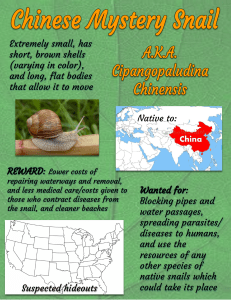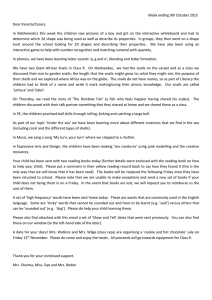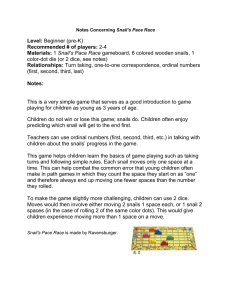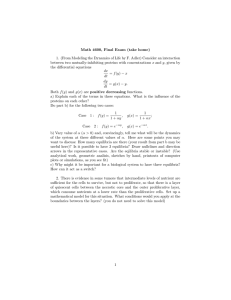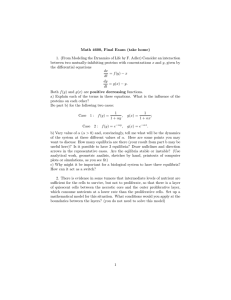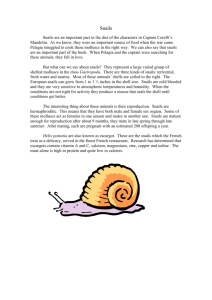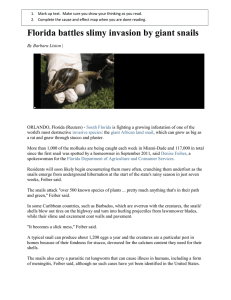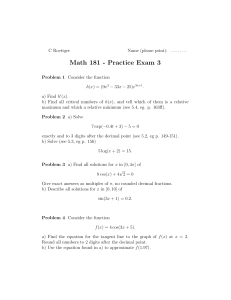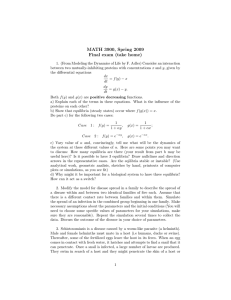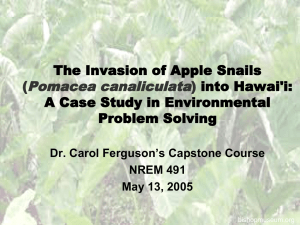Biology Extend II Practice questions Student worksheet #3 A local
advertisement
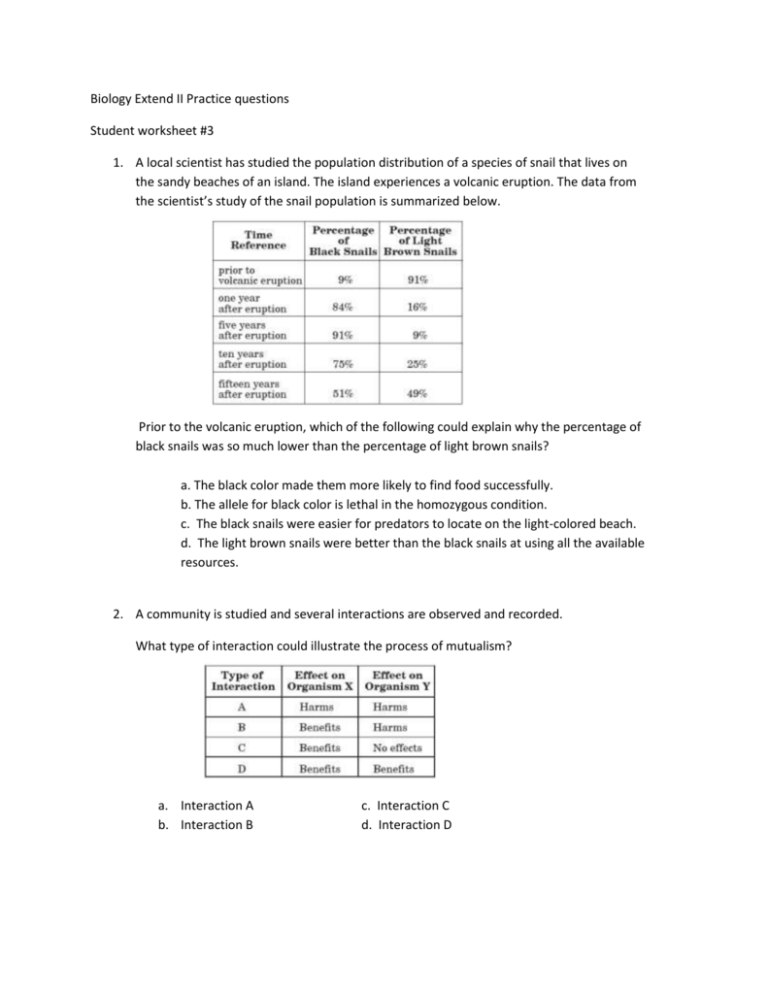
Biology Extend II Practice questions Student worksheet #3 1. A local scientist has studied the population distribution of a species of snail that lives on the sandy beaches of an island. The island experiences a volcanic eruption. The data from the scientist’s study of the snail population is summarized below. Prior to the volcanic eruption, which of the following could explain why the percentage of black snails was so much lower than the percentage of light brown snails? a. The black color made them more likely to find food successfully. b. The allele for black color is lethal in the homozygous condition. c. The black snails were easier for predators to locate on the light-colored beach. d. The light brown snails were better than the black snails at using all the available resources. 2. A community is studied and several interactions are observed and recorded. What type of interaction could illustrate the process of mutualism? a. Interaction A b. Interaction B c. Interaction C d. Interaction D 3. In the carbon cycle, atmosperhic carbon dioxide is converted into organic material by which process? a. Cellular respiration c. decomposition b. photosynthesis d. transpiration 4. Why do ecosystems rarely contain more than a few trophic levels? a. Energy transfer efficiency is high b. Energy transfer efficiency is low c. Energy amounts remain constant d. Energy cannot flow through levels 5. Recent climate data suggests a global warming trend. The most likely cause could be an increase in which gas? a. Oxygen b. carbon dioxide c. nitrogen 6. Abiotic factors that could affect the stability of an ecosystem could include a. Hurricanes, packs of wolves, and temperature b. Blizzards, heat waves, and swarms of grasshoppers c. Droughts, floods, and heat waves d. Species of fish, number of decomposers, and supply of algae 7. Which process usually results in offspring that exhibit new genetic variations?
